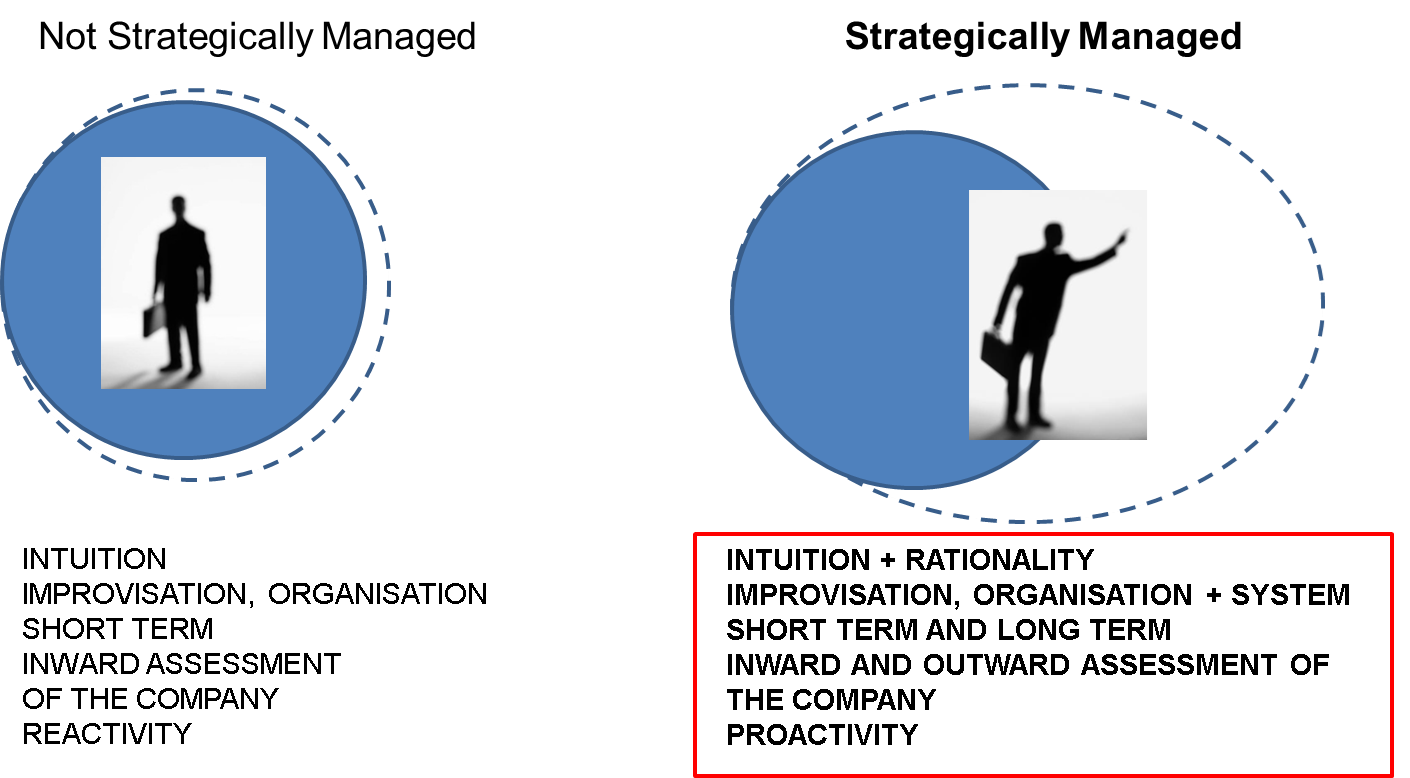2.2. Strategic Management - Myths and Misconceptions
Despite the advantages of strategically managing a small or medium-sized business, the majority of small and medium-sized businesses do not consider strategic forms of management (Orser at al, 2000; Sandberg at al, 2001; Beaver, 2002; Laveren at al, 2002; Mazzarol, 2004).  Sometimes the reasons are objective - e.g. the owners being overworked in the company’s day-to-day operations, preventing them from having enough time and energy to work on the company’s long-term goals. Other times, the reason has to do more with misunderstanding, prejudices and myths about what strategic management really is and what it can bring the company.
Sometimes the reasons are objective - e.g. the owners being overworked in the company’s day-to-day operations, preventing them from having enough time and energy to work on the company’s long-term goals. Other times, the reason has to do more with misunderstanding, prejudices and myths about what strategic management really is and what it can bring the company.
What strategic management isn’t and why certain small and medium-sized businesses opt out of strategic management (Hanzelková, Keřkovský, Odehnalová, Vykypěl, 2009)
-
The widespread belief that the aim of strategic management is to create a formalized plan, in writing. Small or medium-sized businesses do not have the time nor the capacity for this.
FALSE – The aim of strategic management is not to create a formalized plan (although a short, succinct and concise plan could be beneficial to a small or medium-size business). Its main advantage is that strategically managed businesses know how to THINK differently - that means keeping long-term goals in mind, and being more proactive and systematic.
-
The idea that situations in companies change so quickly that by the time I create my strategy, it will no longer be applicable.
FALSE – One of the hardest tasks for businesses is to maintain clear strategic direction (which the company is invested in, preventing a dilution of resources), while simultaneously adjusting it according to sudden and unforeseen changes in the market. The essence of strategic management is thus to choose a clear direction for the company to invest in, while retaining a sense of flexibility and ability to adjust the company’s direction, as an integral part of strategic management.
Strategic Paradox
These new conditions that today’s companies have to adhere to, are explained by M.E. Raynor, graduate of Harvard Business School and consultant at Deloytte Consulting LLP – he uses the term strategic paradox. When conducting his research, Raynor found that companies that have a clearly defined strategy-that is, companies that are capable of deciding on specific strategic goals and concentrating their efforts on fulfilling them, are most likely to generate high customer value and be successful (providing them with a clear competitive edge). However, due to the highly turbulent times we live in, companies are having a harder time predicting future developments. There is then a significant risk in that the company’s strategically selected direction may not be the right one. Companies also find themselves in paradoxical situations - if they choose a clearly defined strategy and concentrate their efforts on fulfilling it, they have a significantly higher chance of succeeding. This, however, also increases the risk of failure, in the event that the chosen direction does not work out, for reasons that the company had not considered. On the other hand, companies who do not concentrate their efforts as much, are usually incapable of generating high customer value, though they are more likely to stay afloat and get by.
A solution to this paradox is for companies with clearly defined strategies to concomitantly pay enough attention to developments in their field and adjust their strategy in the face of unexpected developments. In other words, those who run their companies must be able not only to define their company’s direction, but also to actively adjust and modify their strategy when faced with strategic risks - an absolute necessity for today’s entrepreneurs and managers.
-
The idea that strategic management has an adverse effect on intuitive and flexible management, which is the core of small and medium-sized businesses
FALSE – A more structured and systematic management approach should not REPLACE traditional forms of management in small and medium-sized businesses (which are based on organization, innovation, flexibility, learning from experience, trial and error.) On the contrary, these skills are the cornerstone of small and medium-sized businesses and their competitive advantage (in the current turbulent and fast-paced environment, big companies with formalized management are striving to acquire these skills that are typical of small and medium-sized businesses.) Strategic management in small and medium-sized businesses can efficiently COMPLIMENT certain areas of business where a systematic approach can be more effective:
-
Strategic management is a good source of objective information when deciding on which business opportunities to invest in (not only financially, but also in terms of time, energy etc.). It also often brings about new, relevant information, which could lead to new business opportunities and innovations.
-
Coming up with new business plans which the company will decide to implement, so that they are competitively oriented and carefully thought out with attention to detail. In many cases, the most crucial elements or details that ultimately impact whether or not a product or service succeeds are neglected. New projects often suffer in that certain aspects are underestimated, e.g. the company’s capacity and possibilities for selling the product, distribution, delivery etc.
- It is also a good tool for implementing the systematic day-to-day management of the company’s agreed upon business plans.
Strategic management in use – what are the real advantages?
In the 1990s, Henry Mintzberg, professor at McGill University in Montreal, Canada, and one of the leading figures in the field, pointed out that a rigid and formalized approach to planning, such as trying to generate a single, correct, formalized strategy and the subsequent deviation from strategic management that would follow, will not bring the company any results or benefits. Mintzberg emphasized that companies should spend time on their strategies, though formalized strategic planning should not replace strategic thinking (a creative and often intuitive approach to formulating the company’s vision statement). These strategies should COMPLIMENT strategic thinking. Efficient strategic planning should provide the company with systematic information to supplement and not REPLACE the management’s intuitive decision-making, based on their personal experience. Overworked managers should feel pressured to hold discussions and revise their assessments of the company’s situation and reassess their company’s vision statement by dividing it into achievable, realistic steps. (Mintzberg, 1994).
This holds true even more so for small and medium-sized business which cannot build their competitive advantage on the same resources as big companies, but have to rely mainly on their creativity, innovation, ability to learn, experiment and utilize their social capital and knowledge.
-
Reluctance to bring up sensitive topics during discussions about the company’s strategy and fear of change.
Small and medium-sized businesses often have a number of sensitive, personal issues, which can be a source of conflict and tension. Coincidentally, it is often during meetings about the company’s strategy when all of this latent friction surfaces. This can mean: a long-term clash of opinions amongst owners regarding the company’s direction or operations; discussions about what should happen in the event that the current owner or founder, due to old age or poor health, can no longer manage the company; unequal remuneration conditions for family members in the company versus external staff and many others. During discussions about strategy, other fundamental changes may get brought up, such as management and ownership positions.

Strategically managed and Not strategically managed small or medium-sized business


